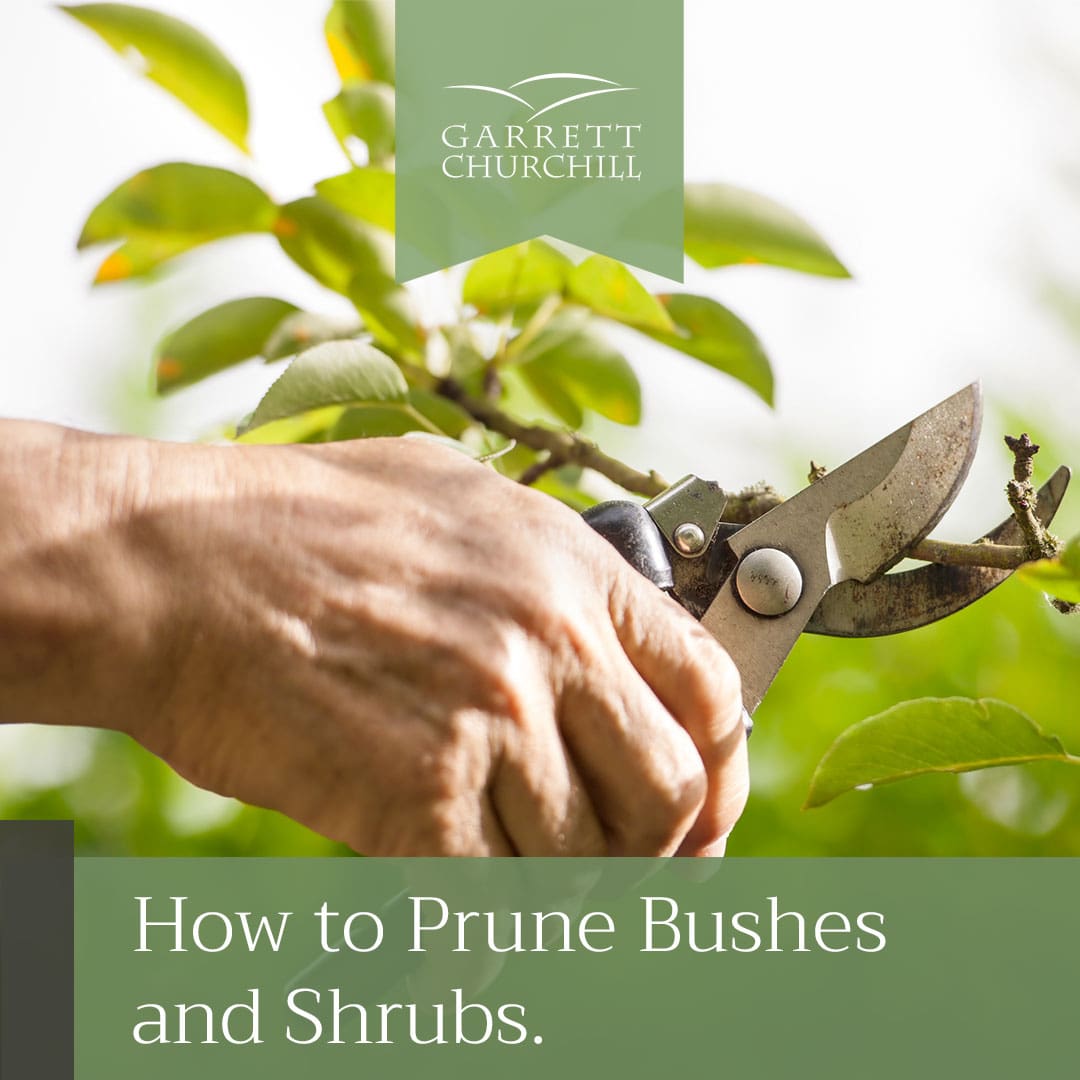How to Prune Bushes and Shrubs
When it comes to pruning bushes and shrubs, using the proper technique, and choosing the right tools is essential. Pruning too much — or too little — can damage landscaping, as can using the wrong tool for the job. You will also want to make sure to prune your plants at the correct time.
Fortunately, achieving a perfectly shaped bush or shrub is not as difficult as it might seem. Following these key pruning tips can help you keep your bushes and shrubs healthy and thriving.
The Secret to Pruning Shrubs
Professional landscapers generally agree that trimming bushes and shrubs should adhere to the ⅓ rule.
Essentially, this means trimming no more than ⅓ of the wood throughout the season. If you prune beyond this ratio, you could damage the plant and ultimately stunt its growth. Conversely, pruning too little means you’ll just have to prune again later.
If you are new to pruning, you might not know that the perfect amount of pruning can actually stimulate plant growth. That’s because whenever a plant loses stems above ground, it will attempt to replace them with new growth.
Physiologically, plants are composed of two parts: those that function above ground and those that operate below. When the stems are pruned, the plant takes in nutrients from below ground and uses its roots to push new growth toward the top. This balance is essential to a healthy plant and is the secret to impeccable pruning.
Beware of Plant Suckers
If your plant appears dormant, pruning might be exactly what it needs to stimulate growth. However, pruning too much of the greenery away can send the plant into shock. In this panicked state, plants are prone to producing suckers.
Suckers are new plants or shoots that grow from the plant’s roots. These shoots can sap energy from the rest of the plant and may continue appearing until the plant is no longer under stress. It is best to remove suckers as soon as they appear.
Pruning a Transplanted Bush or Shrub
If you have recently transplanted your plants, wait until they are no longer in transplant shock before you prune them. This might take one season or more. Basically, you need to wait until the plant’s root system is resilient enough. Pruning too early could stunt the plant’s growth.
If you transplanted a larger shrub, you might have to wait a couple of years before it is ready to be pruned. This is because a grown plant’s root system takes longer to establish itself.
The Right Timing
Only prune a healthy shrub or bush at most once per season. This rule does have exceptions, as some hedges require more frequent pruning to keep their shape. Any additional pruning should be limited to the removal of problematic leaves, dead branches, and suckers.
Most experts recommend pruning your shrubs and bushes in late winter or early spring. During this time, plants are dormant but simultaneously preparing for new growth. Before pruning, you should be aware of when the plant flowers. If it does so in the spring, make sure to leave some flowers on it so they can bloom.
A few tips to keep in mind:
- Spring flowering plants have set flower buds the year before, so they should not be pruned until after flowering is complete.
- Summer flowering shrubs can be pruned in late winter or early spring.
- Nonflowering evergreens can be pruned when required.
How to Deal with Established Shrubs
When pruning an established shrub, take care to remove any dead or damaged wood. Next, identify any areas where you would like to encourage new growth. This is where proper pruning technique is crucial.
Once you’ve selected an area for new growth, look for a bud along the appropriate branch. At a 45-degree angle, prune right above that bud, leaving ¼ inch or less of growth above it. If more than ¼ inch of growth is left, rot can result; similarly, cutting at other angles can wound the plant.
Dealing with Overgrowth
Plants that have been neglected for years will often be overgrown and out of shape. In these instances, the typical ⅓ rule may not be sufficient. This is where rejuvenation pruning comes into play.
Rejuvenation pruning is an aggressive form of pruning that involves cutting the shrub anywhere from 6 to 12 inches above the ground. Don’t worry; it will look like a stumpy pile of stems for a time but will quickly rejuvenate itself.
Only certain plants respond well to rejuvenation pruning. These plants include:
Get Help from A Professional Landscaper
If you have questions about whether your bushes and shrubs will respond well to pruning, our knowledgeable landscape design and maintenance team can help. To get started on your next landscaping project, or to find out how we can help you maintain your current landscaping, contact us today.
